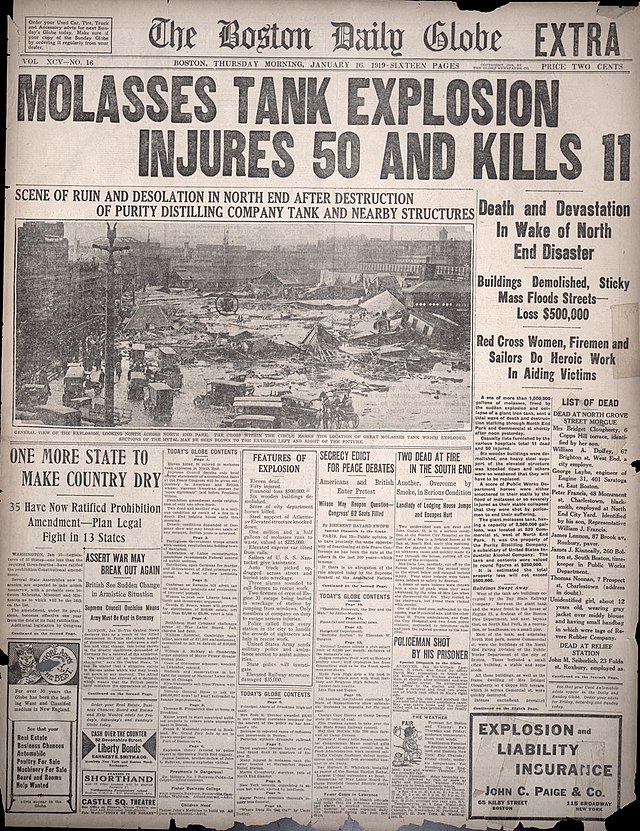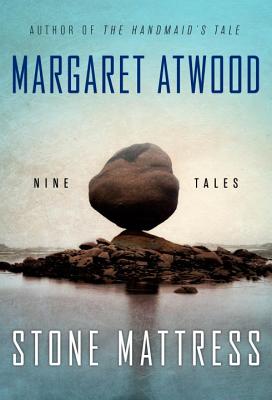This sounds very odd and fascinating, you say. What is heaven's name is the Great Molasses Flood?
Pull up a chair, my friend, and I will tell you a little story.
 |
| From the Boston Globe via Wikipedia |
On January 15, 1919, in the North End neighborhood of Boston, a poorly built 50 ft. tall storage tank collapsed at the Purity Distilling Company facility on Commercial Street. Almost 2,300,000 gallons of molasses burst out of the enormous tank, creating a 25 ft. tall wave that moved down the narrow streets at an almost unbelievable rate of 35 miles per hour.
21 people were killed and 150 were injured. Horses and other animals were smothered. Buildings were pulled from their foundations and destroyed. The elevated train tracks at Atlantic Street were mangled and a train was lifted off the tracks. The accompanying rush of air around the flood hurled debris and caused coughing fits. Afterwards, waist-high molasses flooded several blocks in every direction.
 |
| From Wikimedia Commons |
Rescuers and medical professionals worked around the clock for four days hunting for bodies in the goo and tending to the injured before they stopped searching for survivors.
The immediate cleanup took weeks, although people in Boston reported sticky molasses all over town for months afterwards as workers, survivors, and rubberneckers had tracked the stuff through the streets and onto public transportation, etc. A fire boat was used to hose down the neighborhood with salt water which ran off back into the ocean causing the harbor to be brown all the way through the Summer.
And now, it's an infamous part of Boston lore. People here claim that you can still smell the molasses in the North End on hot and humid days, although I don't ever remember smelling it back when we lived on Beacon Hill.
 |
| From Wikimedia Commons |
But why molasses, you're wondering. Why would anyone want 14,000 tons of molasses in a tank next to the Boston Harbor?
The Purity Distilling Company fermented molasses to produce ethanol which it's parent company, the United States Industrial Alcohol Co., then used to make rum and other spirits. An article about the Molasses Flood from a 1983 issue of Smithsonian, included the following little vignette:
"As the rescue workers and clean-up crews tackled the incredible mess the night of January 16, they paused in puzzlement at the sudden ringing of church bells all over downtown Boston. Nebraska had voted on the 18th Amendment and ratified it. Prohibition was law, and churches which had campaigned for it in their pulpits now celebrated. Men up to their ankles in the makings of rum listened for a moment and went back to work."
So, if you really need an excuse to break open the bottle of Captain Morgan today, pour one out for Boston in memory of the Great Molasses Disaster of 1919. Cheers.
















